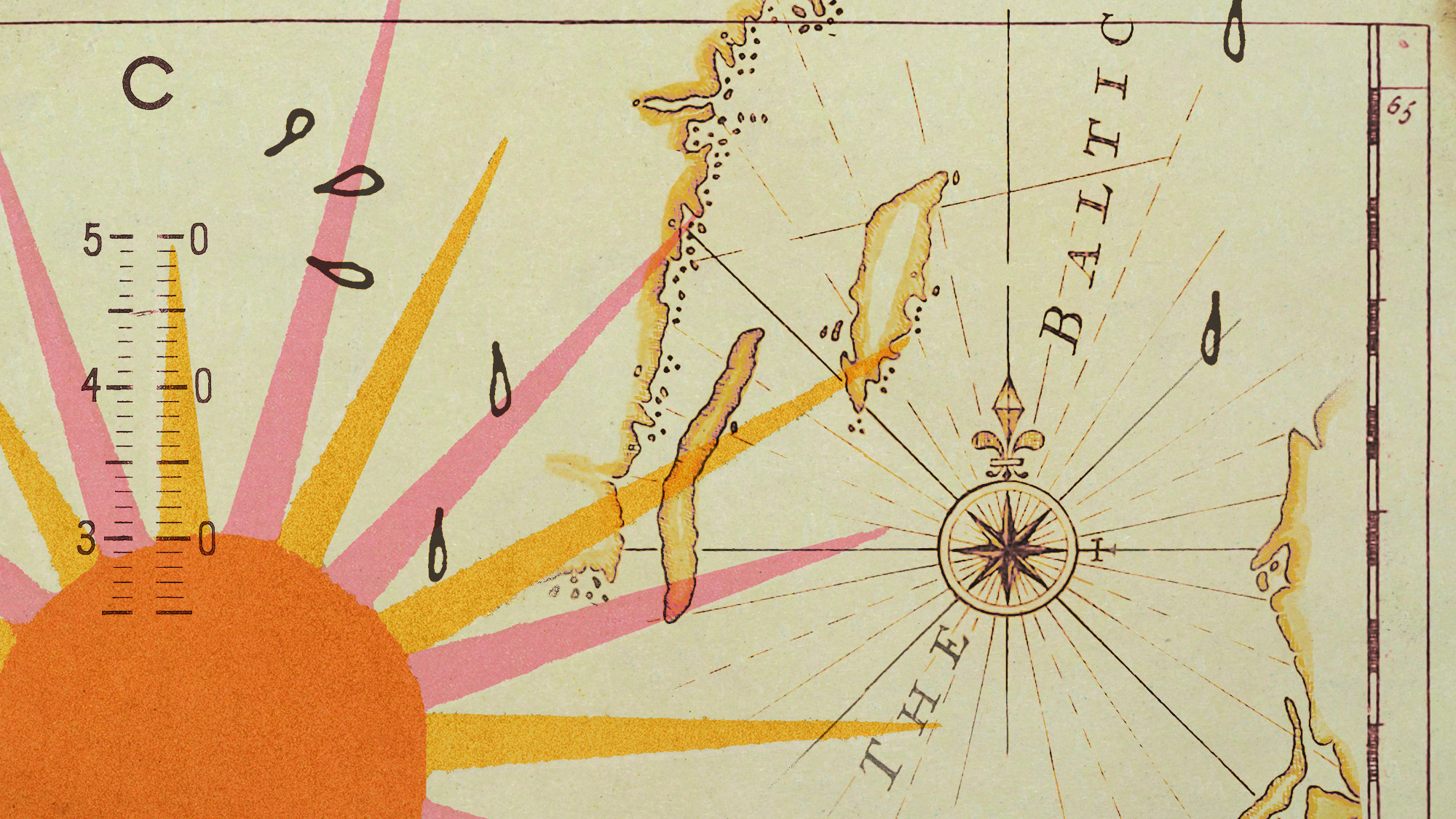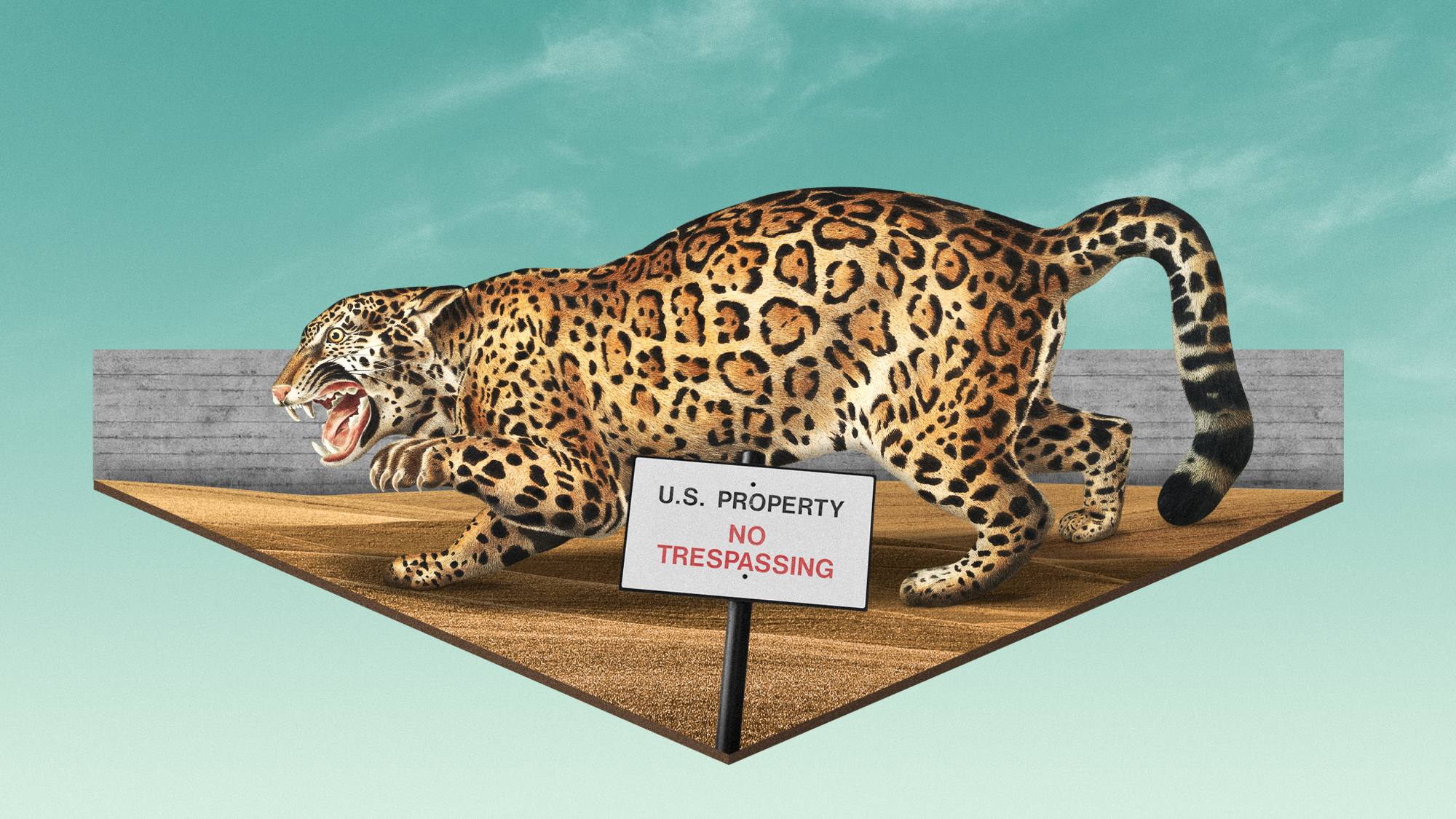Florida’s war on iguanas
State authorities declare open season on troublesome green reptiles as the invasive species spreads rapidly

Florida residents have been encouraged to kill a non-native species of iguana that is wreaking havoc in the region “whenever possible”.
Prompted by wildlife experts’ concerns over the exponential increase in the population of invasive green iguanas (Iguana iguana), the Florida Fish and Wildlife Conservation Commission (FWC) has advised the public that the creatures can be “captured and killed on private property at any time with landowner permission”, Quartz reports.
The organisation adds that homeowners do not need permits to kill the animals, reiterating that in Florida the green iguana is not a protected species and that residents of the state should “kill green iguanas on their own property whenever possible”.
The Week
Escape your echo chamber. Get the facts behind the news, plus analysis from multiple perspectives.

Sign up for The Week's Free Newsletters
From our morning news briefing to a weekly Good News Newsletter, get the best of The Week delivered directly to your inbox.
From our morning news briefing to a weekly Good News Newsletter, get the best of The Week delivered directly to your inbox.
How many iguanas are in Florida?
The Independent reports that green iguanas are thought to have arrived in Florida via South America, either as exotic pets or by “hitchhiking” on ships.
The creatures have flourished in Florida, thanks to the US state’s warm and humid climate. CBS News says females can lay nearly 80 eggs per year, and the reptiles can live up to ten years in the wild.
As a result of their breeding habits - combined with the lack of a significant cold spell this year - the steadily rising population of green iguanas has skyrocketed in the last 12 months. In 2007, the FWC reports that there were just five sightings of the animal in Florida. By 2017 the number had risen to 224, and in 2018 more than 2,700 sightings were recorded by the organisation.
A free daily email with the biggest news stories of the day – and the best features from TheWeek.com
Why are they a nuisance?
For a start, green iguanas can grow to over five feet in length and weigh up to 17lb, and as a result the long burrows they dig - which can measure up to 80 feet long - can damage pavements, house foundations, sea walls and canal banks.
Buzzfeed News reports that green iguanas can also carry salmonella and “pose aviation hazards”. Joe Wasilewski, a Florida-based conservation biologist, told the news site: “If you’ve got a 10 to 15 pound iguana on a runway sunning itself and a plane comes down it can cause devastating damage.”
The FWC has also reported that the creatures “leave droppings on docks, moored boats, seawalls, porches, decks, pool platforms and inside swimming pools”.
“Green iguanas can cause damage to residential and commercial landscape vegetation, and are often considered a nuisance by property owners,” the FWC added.
How are residents dealing with them?
The FWC has stressed that all animals - including invasive iguanas - remain protected under anti-cruelty laws, and thus recently updated the language on its website “to clarify options for removing iguanas”, according to Quartz.
The news site reports that one method to deter iguanas is to “humanely harass” lizards, which involves spraying them with water or hanging wind chimes to repel them. As a lethal option, the agency recommends trapping iguanas and bringing them to a vet or humane society to be euthanised. Under anti-cruelty laws, it is illegal to poison the creatures.
However, some activists and experts have hinted that the FWC’s declaration of open season on the green iguana may be irresponsible.
“We see this over and over again – people inhumanely trying to kill them with a BB gun or more powerful weapon, and injuring the public while doing so,” Debra Parsons-Drake, executive director of the South Florida Wildlife Center, told Buzzfeed.
Wasilewski urged residents concerned with the effects of iguana population growth to “hire a professional to remove them” rather than taking them on directly. “Green iguanas left to their own are not dangerous but if a lay person tries to grab a four foot animal it’s going to defend itself,” he added.
-
 Received a gift card this holiday season? Here’s how to maximize it.
Received a gift card this holiday season? Here’s how to maximize it.The Explainer Make the most of your present
-
 ‘Lumpy skin’ protests intensify across France as farmers fight cull
‘Lumpy skin’ protests intensify across France as farmers fight cullIN THE SPOTLIGHT A bovine outbreak coupled with ongoing governmental frustrations is causing major problems for French civil society
-
 The best books of 2025
The best books of 2025The Week Recommends A deep dive into the site of a mass shooting, a new release from the author of ‘Atonement’ and more
-
 Eel-egal trade: the world’s most lucrative wildlife crime?
Eel-egal trade: the world’s most lucrative wildlife crime?Under the Radar Trafficking of juvenile ‘glass’ eels from Europe to Asia generates up to €3bn a year but the species is on the brink of extinction
-
 What do heatwaves mean for Scandinavia?
What do heatwaves mean for Scandinavia?Under the Radar A record-breaking run of sweltering days and tropical nights is changing the way people – and animals – live in typically cool Nordic countries
-
 The revived plan for Trump's border wall could cause problems for wildlife
The revived plan for Trump's border wall could cause problems for wildlifeThe Explainer The proposed section of wall would be in a remote stretch of Arizona
-
 Spiking whale deaths in San Francisco have marine biologists worried
Spiking whale deaths in San Francisco have marine biologists worriedIn the Spotlight Whale deaths in the city's bay are at their highest levels in 25 years
-
 US proposes eroding species protections
US proposes eroding species protectionsSpeed Read The Trump administration wants to change the definition of 'harm' in the Environmental Protection Act to allow habitat damage
-
 Does Nepal have too many tigers?
Does Nepal have too many tigers?Under the Radar Wild tiger numbers have tripled in a decade but conservation success comes with rise in human fatalities
-
 The controversy over rewilding in the UK
The controversy over rewilding in the UKThe Explainer 'Irresponsible and illegal' release of four lynxes into Scottish Highlands 'entirely counterproductive' say conservationists
-
 What happens to wildlife during a wildfire?
What happens to wildlife during a wildfire?The explainer Flames also affect the flora and fauna